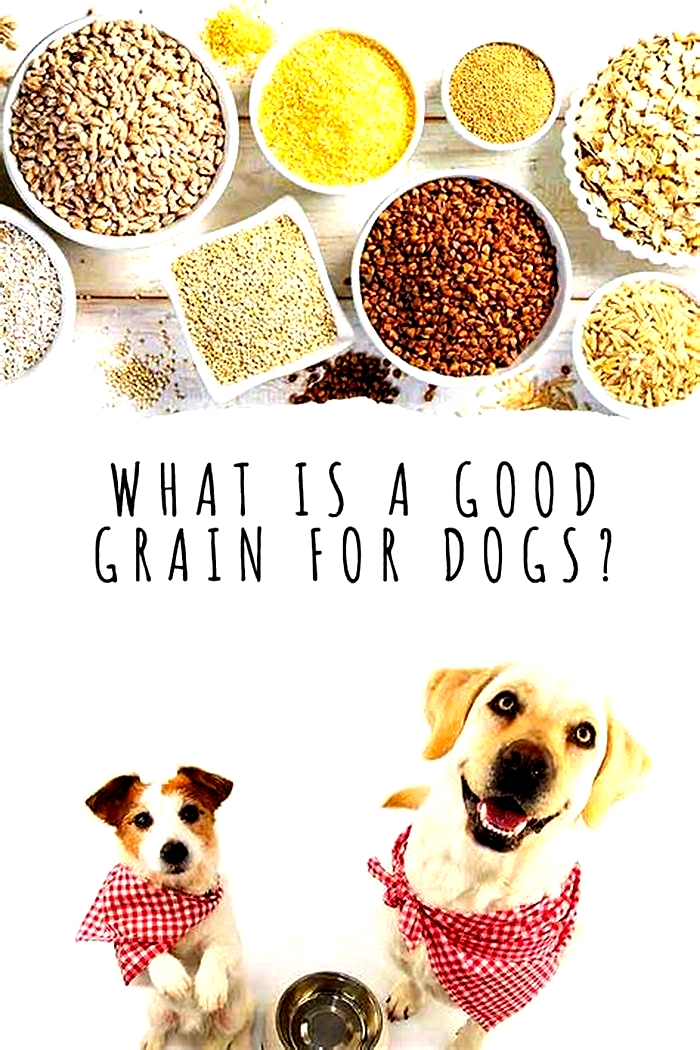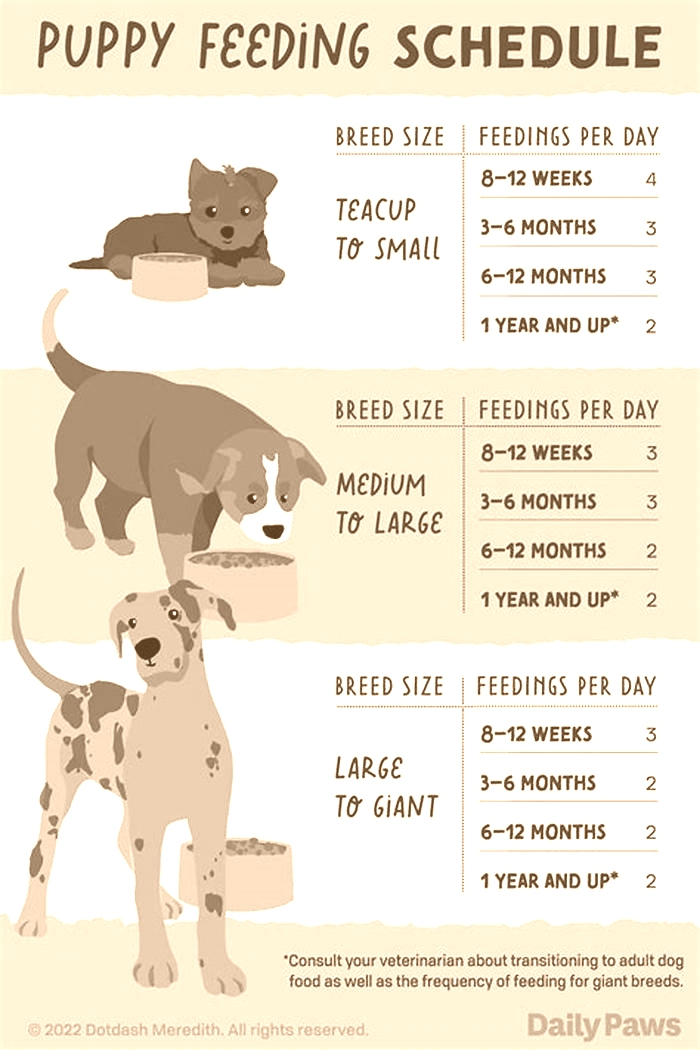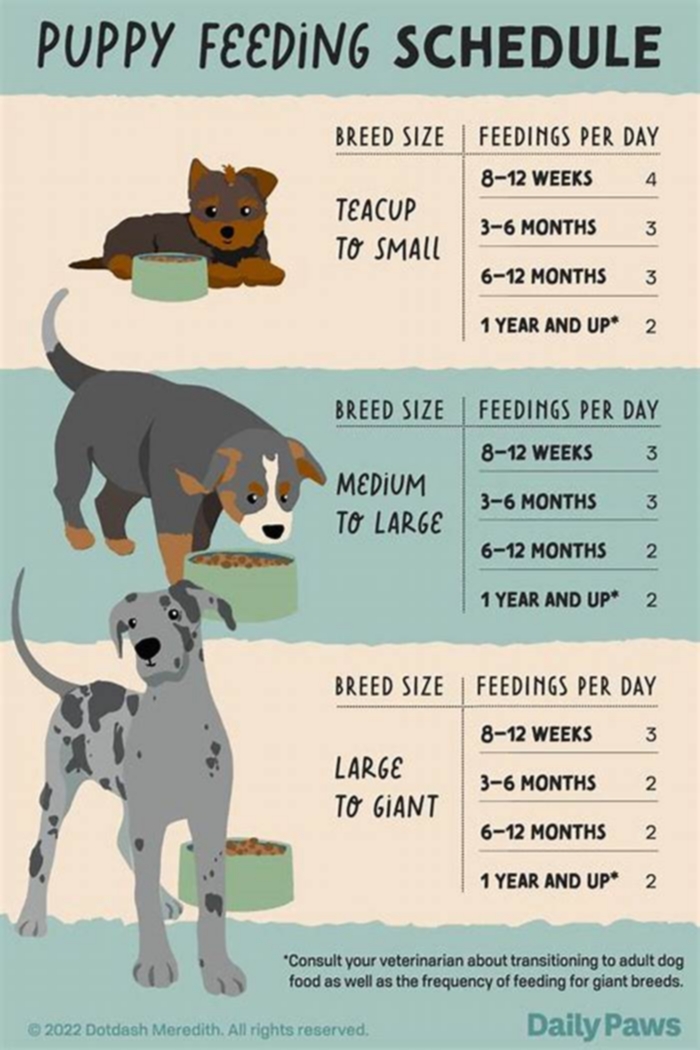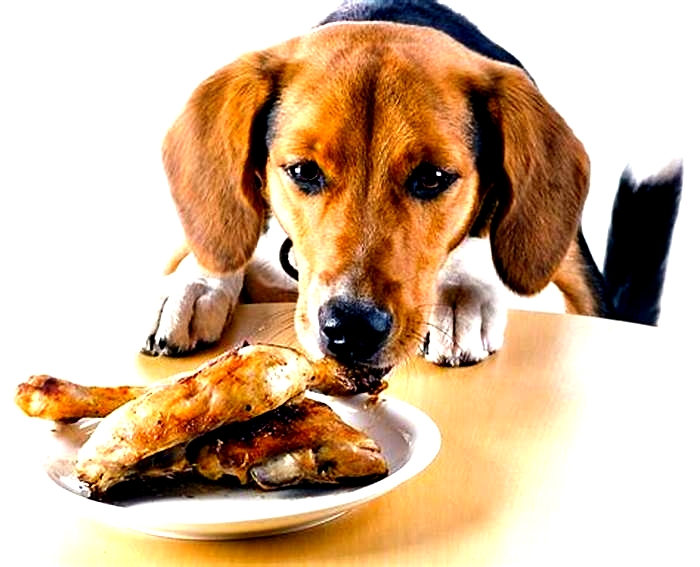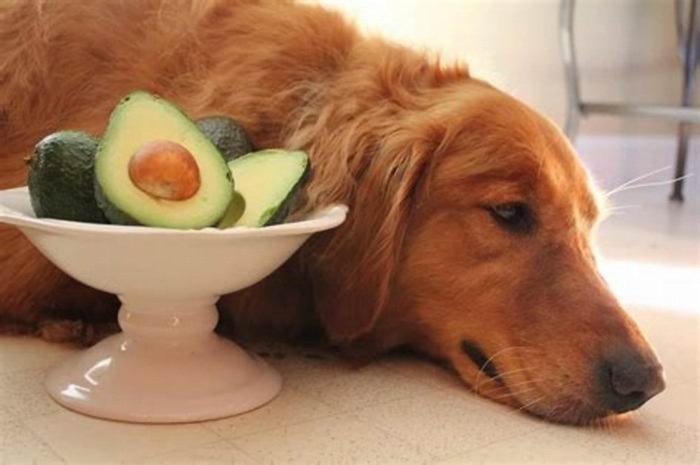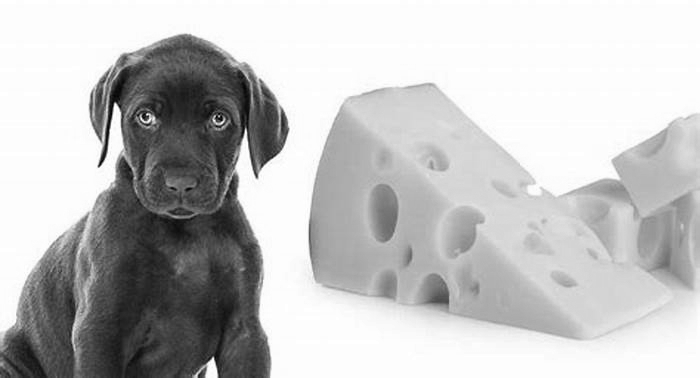What grains are bad for dogs
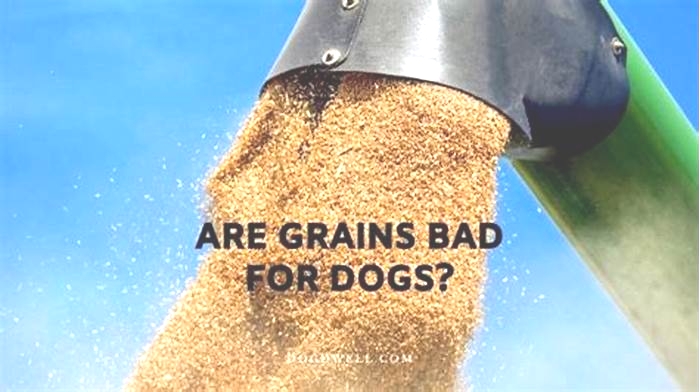
Unpacking the Controversy: Are Grains Bad for Dogs?
To grain or not to grain, that is the question for many confused pet parents these days. Grain-free diets are now under fire, and dog owners are left to wonder why and whether it's because dogs actually need grains in their diets.
The short answer is that dogs do NOT need grains in their diet. Grain-free commercial pet foods seem to be a problem due to their high legume content rather than their lack of grains. Let's take a closer look at grains and their relationship with dog food.
The Debate: Is Grain Bad for Dogs, or Are Grains Good for Dogs?
When the FDA released its Grain-Free Diet Alert back in 2019, it sent shockwaves through the dog-owning community. Information got misinterpreted, fear-mongering reached an all-time high, and scary news headlines proliferated. Dog owners ran to their vets sick with worry that they were harming their pups by feeding them food they thought was healthy but was now reportedly a danger to their lives.
Turns out the sky wasn't falling for all dog parents feeding a grain-free diet. You see, the FDA's inconclusive investigation has focused on a link between certain grain-free foods and DCMdilated cardiomyopathy, which is the clinical term for an "enlarged heart." (DCM can cause arrhythmias and even sudden death.)
"We are investigating a potential dietary link between canine dilated cardiomyopathy (DCM) and dogs eating certain pet foods containing legumes like peas or lentils, other legume seeds (pulses), or potatoes as main ingredients," the FDA states on their official site. Its not the grain-free part that is the potential problem, but rather the species-inappropriate ingredients these grain-free brands use in such large quantities.
Understanding the Distinction: Grains for Dogs vs. Grain-Free Dog Food
The thing is, a lot of healthful pet food brands (including reputable raw companies) were erroneously lumped into this "danger" category by misinformed "experts" who saw all grain-free foods as harmful. There was no distinction made between naturally grain-free foods (e.g., raw) and those that are modified to be grain-free, the kind the FDA is focusing its research on. The effects of this confusion and fear reverberate through the pet food industry today and, unfortunately, it's left many well-meaning pet parents stumped and scared.
The Question: Is Grain-Free Dog Food Bad?
Remember: Not all grain-free foods are created equal. Many grain-free formulas replace grains with other species-inappropriate ingredients, like corn, potato, legumes, seeds, and lentils, instead of replacing those grains with animal protein. Dogs are ill-equipped to handle these kinds of ingredients in such large quantities.
While healthy and naturally grain-free raw food brands, like We Feed Raw, don't contain any of these ingredients, many pet parents are still spooked enough to wonder if they should be adding grains to their dogs' bowls. The very short answer is no.
Clarifying Misconceptions: Do Dogs Need Grains in Their Diet?
According to Dr. Richard Patton, PhD animal nutritionist, "Dogs don't need grain of any kind. They do require small amounts of soluble carbohydrate, which can be found in meat in the form of muscle glycogen."
Grains are not an ancestral food for dogs. High-quality animal tissue, not grains, is their optimal source of nutrition. Grains break down into sugars, and excess starch and sugar promote illness: Obesity, diabetes, skin problems, allergies, and more. Dogs will benefit most from low-carb diets, and grains are high in carbs.
While the DCM investigation is ongoing, it remains a complicated matter. To date, the FDA hasn't deemed any grain-free products unsafe, but the Pet Food Institute continues to study the link between nonhereditary DCM and diet (particularly those containing high proportions of legumes and pulses).
Answering the Big Question: What is the Best Food for Dogs?
Ultimately, the best diet for your dog is the one that mimics their ancestral dieta naturally grain-free diet made up of high-quality animal protein, fat, and edible bone. This is the most biologically appropriate diet for our canines and one they've been thriving on for millennia. So let's feed them what they were designed to eat. Let's feed raw.
Take our quiz now to find out how much it would cost to get your pup started on We Feed Raw.
Frequently Asked Questions (FAQs)
Is grain bad for dogs?
Grain is not necessarily bad for dogs, but it is not a natural part of their diet. Grains break down into sugars, which may promote illnesses such as obesity, diabetes, and skin problems. Importantly, dogs can live healthily on a diet devoid of grains.
Do dogs need grains?
Dogs do not need grains in their diet. High-quality animal protein, fat, and edible bone, mimicking their ancestral diet, provide the most complete nutrition for dogs.
What are some appropriate grains for dogs if I choose to include them?
If you choose to include grains in your dog's diet, it's advisable to use healthier options such as brown rice, quinoa, and oats. However, remember that these should not replace animal proteins in your dog's diet.
Is grain-free food bad for dogs?
Grain-free food is not inherently bad for dogs. The issue arises when grain-free diets replace grains with large quantities of species-inappropriate ingredients, like peas, lentils, and potatoes. These ingredients, when ingested in large quantities, can be problematic for dogs.
Are grains good for dogs?
While they are not harmful, grains are not a necessary part of a dog's dietthey do not provide any unique health benefits that dogs can't get from a high-quality, meat-based diet.
Is grain good for dogs?
Grain is not harmful to dogs, but neither is it essential. Some dogs might tolerate grains better than others, but they all will thrive on a diet primarily composed of animal-based proteins.
What grains are good for dogs?
If you decide to include grains in your dog's diet, options like brown rice, oats, and quinoa are preferable. Nonetheless, these grains should not substitute the primary component of their diet, which is animal-based proteins.
Is grain-free dog food bad?
Not all grain-free dog foods are bad. The potential problem lies not in the lack of grains, but in the replacement of grains with inappropriate ingredients like peas, lentils, and potatoes in large quantities.
Do dogs need grains in their diet?
Dogs do not require grains in their diet. Their dietary necessity is centered on animal protein, fats, and edible bones, which aligns with their ancestral diet.
10 Grains Dogs Can Eat & When to Avoid Them

Dogs are naturally omnivores, just like us, so they need a combination of meat and plant-based food sources. Whole grains are a great source of complex carbs to give your pup the energy they need to keep moving throughout the day, but not all grains are created equal. Look for whole grains like oats and bulgur over starchy grains like corn, and consider a grain-free diet if your dog is allergic to grains.
Which Grains Are Good for Dogs?
There's considerable debate on whether dogs should eat grain at all, and the debate over "grain-free" dog foods rages on, so consult your veterinarian if you aren't sure about a particular dietary choice for your pet. That said, most dogs can eat a wide range of different grains. Of course, they should always be cooked before feeding to make sure they're digestible. Some of the healthiest grains dogs can eat include:
- Whole wheat
- Oats
- Barley
- Quinoa
- Brown rice
- Wild rice
- Millet
- Bulgur
- Sorghum
- Corn
Quick Tip
Look for dog foods that contain whole grains. You should see the term "whole" before the grain listed in the ingredients. Avoid terms like "middlings" or "mill run."
How Much Can They Eat?
Even though grains contain a lot of beneficial nutrients like fiber, vitamins, and minerals, they shouldn't make up the bulk of your dog's diet. High-carb diets or foods packed with simple carbohydrates can lead to weight gain and obesity if the dog isn't active enough to use all the energy (and they'd probably have to be a professional athlete to do that). Your dog's diet should be no more than 20 percent carbohydrates, including grains.
The Grain-Free Diet Debate
If you feel like you're experiencing whiplash with all the information around the grain-free diet debate, you're not alone. Here's the deal: in 2018, the FDA announced a possible link between dilated cardiomyopathy (DCM) - which affects the heart's ability to pump blood and oxygen - in dogs who ate a grain-free diet.
Some veterinarians suggest it isn't necessarily the lack of grains that caused the heart problems, but the presence of starches, such as pulses (also known as legumes, namely peas) and potatoes that were included in the food in lieu of grains.
Do Grains Cause Allergies?
Similarly, some people believe that diets containing grains cause more allergic reactions in dogs. You're probably also aware of the gluten-free trend in human foods, and this probably contributes to the generalized concerns over feeding grains to dogs.
Yes, grains can trigger allergic reactions in dogs, just like in humans. Are they the leading cause, though? Probably not. The top five foods that lead to allergies in dogs are beef, dairy, chicken, wheat, and egg. As this study confirmed, protein sources in dog foods are far more likely to trigger allergies than grains, despite consumer perceptions around grain-free diets.
That doesn't mean grains can't cause allergies in your dog, however. It just means it might be hard to tell what your dog is reacting to in a commercial diet.
How to Tell If Your Dog Isn't Tolerating Grains
Dogs can definitely experience food allergies, and grains might be the source of their problems. If your dog is grain intolerant, you'll notice these signs:
Quick Tip
If your dog is truly allergic to grains, a grain-free diet may be right for them.
To Grain or Not to Grain?
If you choose to feed your dog grains, try to pick whole grains. And if you're worried that your dog may be allergic to grains, you can execute an elimination diet to see how they do without the grain. Just know these food trials take a lot of time and patience to know if they're working. Talk to your veterinarian for personalized food recommendations to find the right diet for your dog, whether or not it contains grains.
2024 LoveToKnow Media. All rights reserved.
Are Grains Bad For Dogs? What Does Science Say

Perhaps you think that grain is a cheap ingredient in dog food. Something utterly unimportant compared to meat and protein. Or even harmful.
And who could blame you? With all the bad rap that gluten and grains have received in the last few years, a grain-free diet seems the right way to go.
Its hard to make sense of different health claims we simply want the best for our family members, four-legged or human.
How bad is grain for your dog, really? Lets see.
You might be surprised once we separate the proverbial wheat from the chaff.
Key Information
Grains are not bad for dogs
Dogs are omnivores and can digest grains well. Grains provide carbs, fiber, vitamins, minerals, and antioxidants for dogs.
Grain allergies are rare
Most dogs are not allergic to gluten or grains. Meat and dairy are more common allergens. Grain-free diets are not necessary for most dogs.
Whole and ancient grains are better
Whole grains and ancient grains have more nutrients and less chemicals than refined grains. Examples are oats, barley, buckwheat, amaranth, and quinoa.
Grain-inclusive dog food quality varies
Not all grain-inclusive dog foods are equal. Check the ingredient list, nutritional profile, digestibility, gelatinization, and production standards when choosing a dog food with grains.
What Are Grains?
Most grains are seeds of grass. They can be categorized in several ways.
There are also pseudo-grains. These dont come from grass but rather a bush. Examples of pseudo-grains are buckwheat, quinoa, amaranth, millet, and teff.
Gluten VS Gluten-Free Grain
Gluten is a type of protein.
Some grains contain gluten. These include wheat, spelt, rye, and barley.
Did you know that there are also gluten-free grains? Oats, rice, and corn do not contain gluten.
You should still check your box of oats for a clear no gluten statement. Sometimes, other production ingredients, like wheat or soy, might seep in.
Industrial VS Ancient Grain
All the grains are ancient in the sense that they have been around for thousands of years.
But the industrial grains like wheat, corn, and rice have been modified and bred more than others. The idea is to make them resistant to pests and increase the yield.
This has drawbacks since such grains are less nutritious.
The ancient grains, on the other hand, havent changed much. Grains like amaranth, quinoa, buckwheat, sorghum, and millet are more nutritious than industrial ones.
They are also less likely to contain herbicides. If they remain in the food, they can cause issues down the line.
Whole VS Refined Grain
Grains are usually sold in two forms: whole and refined.
Refined grains, like wheat or white rice, have been milled to remove their husk, bran, and germ layer.
This makes them more shelf-stable since they retain less moisture.
However, the process also removes most of their minerals, vitamins, and fiber. A refined grain is usually lower in fiber and higher in carbohydrates.
It is less nutritious than a whole grain that has been minimally processed to remove only the germ.
Whole grain has a lot of essential minerals, vitamins, and fiber intact.
For instance, white rice is less nutritious than brown rice. But white rice is easier to digest, and brown rice is also more expensive.
Can Dogs Eat Grains?
Yes, dogs can eat grains. Dogs are omnivores.
But why do dog owners still question this statement? We know that dogs descended from wolves, and, well its unlikely you ever saw a wolf eating a pretzel.
Heres the thing dogs did come from wolves, but theyve also been by our side for a long time.
Meaning, over time, they adapted to human food. In fact, dogs have amylase in their pancreas. The role of amylase is to dissolve starch and carbs.
The study by Swedish scientist Erik Axelsson proved that amylase is up to 28 times more active in dogs than wolves. So, dogs can digest grain much better than their ancestors.
Its true that certain dog breeds are more prone to gluten sensitivity and allergies. Irish setter, for example, is one of those. But that doesnt mean all dogs are carnivores.
Are Grains Good for Dogs?
Grains are a rich source of carbs which produce energy. Good carbs are especially important for puppies and active dogs, since they support growth, development, and provide energy for everyday activities.
But grains provide a lot more benefits apart from their energy-boosting abilities.
Grains contain fiber, antioxidants, and minerals. Dietary fiber is crucial for proper digestion, weight management, and heart health. Foods rich in fiber take longer to digest, so there are no blood sugar spikes, and the energy is more stable throughout the day.
A wholesome grain is especially rich in B-vitamins, which are vital for cognitive function, nerves, and muscles. They also support a healthy coat, nourish skin, and promote the immune system in dogs.
The antioxidants in grains protect dogs cells from oxidative stress. Meaning, they guard against cell damage which further strengthens the immune system.
Whole grains and ancient grains are especially rich in all of the above nutrients. When looking for dog food, you want these on the ingredient list. They will provide your canine with most benefits.
Speaking of dog food, grains are significant since they bring the kibble together. They also give it its proper shape and texture.
Finally, grains are cheaper than meat meaning, they enable dog food kibbles and mass production.
The best part? If the dog food recipe is good and well-balanced, your dog will get complete nutrition at a fraction of the cost. The key being a well-balanced diet (we dont want our dogs to starve).
When Are Grains Bad for Dogs?
So should we feed grain to our furry friends with no discernment?
Not really. In fact, there are several instances when grains can be harmful, if not downright dangerous.
Gluten and Wheat Allergies
Some dogs are allergic or sensitive to gluten and wheat. For these dogs, ingesting gluten might trigger an allergic reaction, anaphylactic shock, and many health issues.
Before you diagnose your canine with celiac disease or gluten sensitivity, you should know that grain allergy is not as common as marketers would like us to think.
Actually, the most common food allergies in dogs are to meats. Beef and chicken are in the top three allergies.
After that, the most common allergy is to dairy, and only then, to gluten.
If you suspect that your canine is allergic or sensitive to gluten and grains, ask for veterinary advice.
Glycemic Index & Diabetes
The glycemic index is a tool for human nutrition. It measures how fast a certain food raises blood glucose levels in humans.
As such, it does not apply to dogs. There are no FDA-established values of glycemic index for canines.
Still, some dog breeds are more prone to diabetes than others and many of them include smaller breeds like Pugs and Miniature Schnauzers. In case of diabetes, its important to control a dogs carb intake.
As for the glycemic index, you should know that the GI of a single ingredient doesnt say much in the context of the kibble. Cooking changes the glycemic index, and you should look at the GI of the whole formula.
Still, a much better and safer approach is to read the guaranteed analysis and check calories and sugar content. Furthermore, dog foods for diabetic dogs are modeled after human diets.
Digestive Issues
Gluten allergies are not very common. But digestive issues, on the other hand, are much more widespread.
Grains are rich in fiber that can provide additional health benefits to both humans and dogs alike. Fiber is proven to regulate digestion by stimulating the growth of healthy bacteria in the digestive system.
However, it can also cause digestive problems. Grains like corn, wheat, or rice may lead to flatulence, bloating, stomach discomfort, and other digestive problems.
In these cases, grain-free dog food might help.
Weight Management
Any food high in calories can lead to weight gain. This does not refer only to grains.
Grain-free diets can also cause weight gain in dogs. Just because they dont contain grains, doesnt mean they are free of carbs.
In terms of weight gain, make sure you check the calorie content on the label and feed your dog accordingly. The calories dont depend solely on grains, but they are crucial for weight management.
Roundup/Glyphosate
Wheat and corn are the top two crops that are likely to be genetically modified.
They are also among crops that can contain glyphosate a controversial herbicide said to cause infertility and cancer in humans.
Grains like corn and wheat may very well be contaminated with glyphosate. This is concerning since we do not yet know all the consequences of glyphosate on human health.
How Many Nutrients Does a Dog Get From Grains?
There is no doubt that grains are nutritious. Studies have shown they contain varying degrees of protein, fiber, fat, vitamins, and minerals.
All these can be great additions to your dogs diet.
But do dogs get all those nutrients? Two factors influence how much of the good stuff a dog can metabolize.
Digestibility
Most dogs can digest animal protein more efficiently than plant material. Animal sources contain a full amino acid profile that your dog needs.
However, that doesnt mean plants arent a good protein source. But it takes several sources for a full nutritional value.
We also know that excess fiber can slow down digestibility in meat-eaters. Highfiber content will impact it significantly.
What do all these mean? When you are looking at the ingredients list, hopefully, there will be several different plant sources.
If the plant protein is dominant in dog food, make sure there isnt too much fiber otherwise, your dog might not be able to use most of it.
Gelatinization
Gelatinization is the heating and cooking of the kibble ingredients, specifically starches. The starch is heated at an appropriate high temperature until it swells, loses its original crystal structure, and becomes soluble.
Starch gelatinization has been linked to digestibility. For example, rice becomes more digestible once its been gelatinized. It also loses some of the nutrients.
However, some grains, like corn, retain their (non-)digestibility even after gelatinization.
In other words, they are viewed as cheap ingredients since dogs cant digest their nutrients as efficiently.
What do these mean for you and your dog?
Sometimes a food is just not as digestible i.e. its nutrients cant be absorbed properly.
A recent study may have found a solution to this.
The corn is usually ground before gelatinization. The study mentioned that grinding corn into even finer particles may improve its digestibility. Meaning, the dogs can digest more of corn afterward.
Is Grain-Free Dog Food Better?
All this grain talk maybe got you thinking about whether you should just choose a grain-free diet.
Grain-free dog food has been very popular in the last couple of years. Its proponents claim their dogs skin improved, the coat got shinier, and they are thriving.
This is quite possible if the dog is allergic to grain. A grain-free diet usually contains sweet potatoes and pea protein to address grain allergies.
In some cases, grain-free food will help with joint health, immune function, and healthy gut lining.
But sometimes, its about the change of diet itself and not the exclusion of grain. Maybe, by choosing a grain-free dog food, you have inadvertently removed another allergen, like chicken or beef.
Dont think that grain-free dog foods are a panacea. They are not.
In fact, in 2019, FDA suspected that grain-free diets are the main reason behind dilated cardiomyopathy in dogs. DCM is a severe heart disease caused by a lack of taurine.
Hundreds of dogs got sick, and more than 90% of them were on grain-free dog food.
For some dogs, the condition improved once they switched to grain-inclusive diets again.
So, a grain-free diet may be useful in some cases but in others, it is potentially fatal.
Before you opt for grain-free food, talk to your veterinarian about food sensitivities in pets, DCM, and other risks involved.
Which Grain Is Best for Dogs?
Lets say your dog doesnt have a grain allergy, and there is no reason to put them on grain-free pet food.
Are there some healthy grains to look out for?
Why, yes. Glad you asked.
Whole Grain
Most veterinarians and pet experts agree that whole grain is good for your dog.
The reason is that its nutrients are intact which means they offer much more than mere energy, i.e. carbs.
Whole grain is a tiny powerhouse of vitamins, minerals, fiber, and carbs.
Whole wheat, brown rice, barley, buckwheat, and whole oats are wonderful additions to your dogs diet.
Ancient Grain
Ancient grain has not been altered or processed much.
This means two things:
- More nutrients they are especially rich in vitamin B, zinc, and fiber
- Less tampering ancient grain hasnt been genetically modified like industrial ones, and generally contains less pesticides, so its safer
Grains like amaranth, millet, kamut, and sorghum are worth looking further into.
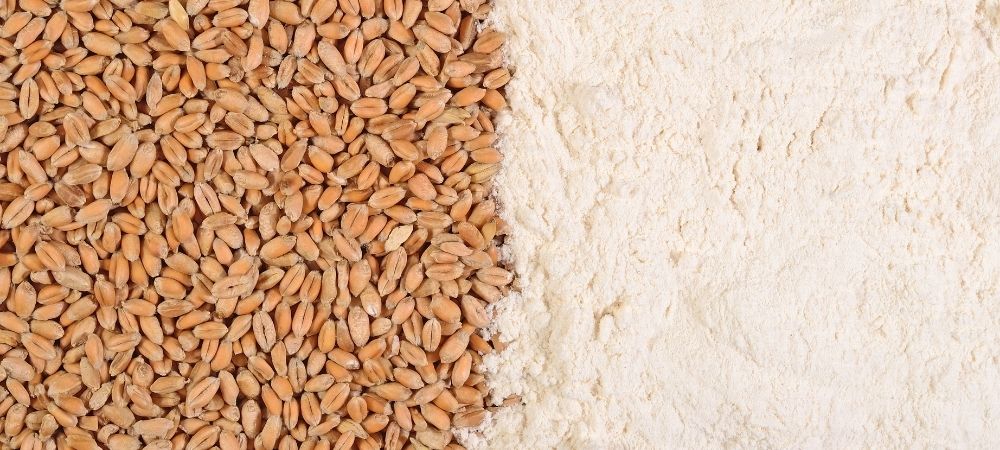
Which Grain to Limit or Avoid
Some grains should be limited in dog food.
A caveat: these grains are not bad per se, as some would have you believe. They are simply lower in nutritional value.
That doesnt mean they should never be used. Sometimes, these are added to complete the nutritional profile of a recipe.
We just think that, ideally, they shouldnt be higher up on the ingredient list.
Refined Grain
Grains like wheat or white rice have been stripped of their nutrients.
During the production, a hull is removed from the grain. This does two things: prolongs shelf-life and makes it highly digestible.
It also removes vitamins, minerals, and fiber. Whats left? Mainly starch.
Refined grains can be used to boost the calories and sugar content in a recipe. They should not, however, be primary carbs in a recipe.
By-products
You may have come across some interesting names in a dry dog food recipe:
- Corn gluten meal
- Wheat middlings
- Wheat gluten
- Oat fiber
These are all by-products of food production.
A common myth circulating the web is that by-products are nothing but cheap fillers.
Not true for example, wheat middlings is known to be a great source of protein and fiber.
Its very easy to discard an ingredient. All these have their place in the context of a recipe.
They are, however, less nutritious than the original grain and as such, shouldnt be the main carb source. But they can still be used to complement the whole grain in the recipe and raise the nutritional value.
How to Ensure Grain Quality
Is all grain-inclusive dog food created equal? Of course not.
The question of grain is also about the formulas and pet food industry on the whole.
When deciding on grain-inclusive food, there are several things you need to take into account.
Nutritional Profile and Ingredients List
The ingredient list tells you what grain is used and it does have some valuable info.
The position on the list shows the amount of an ingredient in a recipe. Ideally, a whole or ancient grain should be higher, and refined grain and by-products further down the list.
Other than that, there is little you can conclude from the list alone. Remember digestibility and gelatinization will affect the ingredients in the whole recipe. Its hard to get correct info on these two.
That is why the nutritional profile of the formula is much more important.
Make sure the profile follows the AAFCO guidelines and the life stage or specific needs of your dog. For example, large-breed dogs will have different needs than smaller breeds.
Feeding Trials
Some pet food manufacturers conduct feeding trials on their dog foods.
These are designed to test whether the dog food formula does what its supposed to. Meaning, if the nutritional profile covers a dogs dietary needs.
If a company has done the trials, the bag will read:
Animal feeding tests using AAFCO procedures substantiate that (name of product) provides complete and balanced nutrition for (specific life stage).
Dog owners can also contact the pet food manufacturer and ask about the trials.
Company Research & Quality Assurance
There are several other things that you can check to make sure youre buying from a credible pet food producer.
First off, does the company publish research papers? Ideally, they would have a nutritionist on the team and publish in peer-reviewed journals.
Secondly and this extends beyond the pet food are their production facilities complaint to food production standards?
FDA and AAFCO (Association of American Feed Control Officials) regulations, along with ISO and HACCP standards, ensure high-quality production. They also address some of the prevailing concerns like mites and mold.
Our Verdict
Grain is not the villain. The best food is the one that helps your dog thrive.
Pet owners have been hearing a lot about gluten and grains lately. Most of these claims are grossly overstated, and they do nothing but instill fear and promote grain-free dog foods.
Dont buy into the hype. Grain-free diets may replace grains, but they come with their own set of challenges. Every dog has individual needs.
As usual, proper information is the key to choosing the best dog food. With quality research and veterinarian consultations, your pets will be happy, healthy furballs.
Want to learn more? Check out our takes on best grain-free dog food and best dog food with grains.

